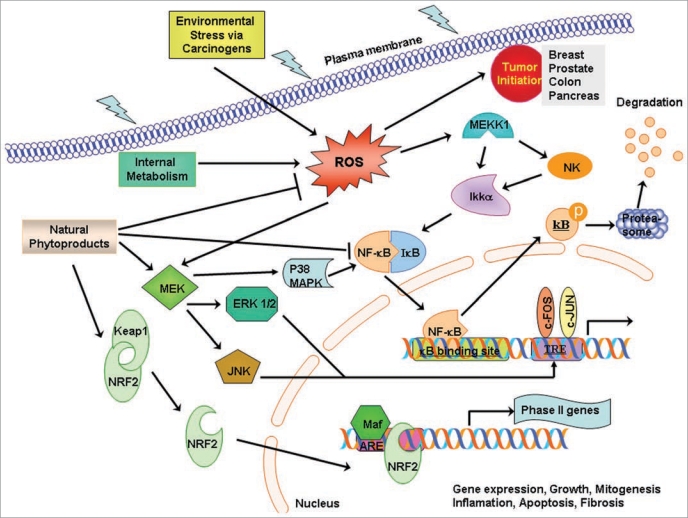Figure 2.
A putative model for oxidative stress induced interactions in carcinogenesis. Reactive oxygen species (ROS) mediated oxidative stress either by environmental carcinogens such as UV and ionizing radiation or by mitochondrial metabolism exerts several effects on DNA damage and generation of oxidative lesions, gene expression, growth regulation mitogenesis, inflammation, apoptosis and fibrosis leading to genomic instability and cancer progression. Chemical signals generated by dietary chemopreventive agents, anticancer agents, antioxidants and antioxidation enzymes, cause Nrf2 nuclear translocation that sets in motion a dynamic machinery of coactivators and corepressors that might form a multimolecular complex with Nrf2 for modulating transcriptional response through the antioxidant response element, ARE producing several phase II detoxification enzymes as stimulation of cellular defense system during stress. Oxidative stress might also cause release of NFκB from IκB and stimulate NFκB nuclear translocation to modulate transcriptional response through the NFκB response element. Several members of the MAPK family may act in concert with Nrf2 and NFκB with multiple interactions between the members of the putative complex to elicit the chemopreventive and pharmacotoxicological events against carcinogenesis.

